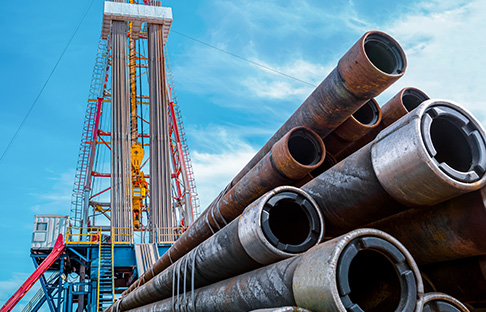Oil is the commodity making headlines these days.
The Russian invasion of Ukraine has pushed the price of oil up to a level we’ve experienced only once before, during the 2008 oil spike.
But another commodity stands to benefit even more from Russia’s aggression…
Natural gas.
Last week, the CEO of JPMorgan Chase, Jamie Dimon, told President Biden that the United States needs a new Marshall Plan.
The Marshall Plan was a U.S.-sponsored recovery program that was created to help the economies of Western Europe heal after World War II.
The U.S. wanted to create a stable European continent where democracy would thrive. Where it was applied, the Marshall Plan was a success.
But Dimon isn’t exactly calling for a new Marshall Plan to rebuild a postwar Europe.
Dimon is calling on the United States to help end Europe’s debilitating reliance on Russian natural gas.
Currently, a terrifying 45% of the natural gas that Europe uses comes from Russia.
That means nearly half of the continent is at risk of Russian President Vladimir Putin turning off the power to their homes and businesses.
Can you imagine if the United States were in that position?
Well, many of our closest allies are. And it’s an unacceptable position to be in.
Dimon wants the U.S. to push for Europe to massively expand its liquefied natural gas (LNG) import capabilities.
Natural gas needs to be cooled and put into a liquid form for transport overseas.
Russia, due to its geographical location in Europe, can transport natural gas to the rest of Europe in a gaseous state by pipeline. Other gas-rich countries, like the United States, need to do it by tanker in LNG form.
With sufficient LNG facilities in place, the United States, which is blessed with an abundance of natural gas in shale reserves, could ship natural gas to Europe and replace Russian natural gas.
This is no pie-in-the-sky idea.
Germany, which is also reliant on Russian natural gas, has already announced plans to fast-track two massive new LNG import facilities.
This new source of demand is great news for American natural gas producers, who are already looking at a bullish future.
Demand for natural gas, the cleanest-burning hydrocarbon, was already projected to grow at a strong clip over the coming decade.
Countries across the world want to eliminate the use of coal as a power source due to its harmful role in climate change.
Natural gas will be pinnacle in the transition away from coal.
Both China and India, which account for more than a third of our planet’s population, have stated public policies aimed at increasing natural gas as a share of their energy mix.
What’s important to note is that neither China nor India has a significant amount of domestic natural gas production.
That, like Europe’s move away from Russian natural gas, paints a nice picture for the future of American natural gas producers.
A 13% Yield at Current Natural Gas Prices
Buyer beware… Investing in U.S. shale gas companies has been a nightmare.
From the start of the millennium through 2019, these companies drilled themselves into oblivion.
Drilling like maniacs, they cratered the price of natural gas and made no money for their shareholders.
Finally, a couple of years ago, Wall Street and investors decided they had seen enough.
U.S. shale gas producers saw their capital cut off, and they faced demands for change from shareholders.
What has emerged is an industry that’s no longer interested solely in growth. Instead, natural gas producers are laser-focused on creating shareholder value.
Their new strategy is to stabilize production or grow it slightly.
Instead of spending their cash generated from gas production on endless growth, producers are returning that cash to shareholders.
How or why this wasn’t the business model all along, I have no idea.
What I do know is that I like what I’m seeing – especially when it comes to Chesapeake Energy (Nasdaq: CHK).
Now, at one point, Chesapeake was the poster child for irresponsible growth. But things change.
Chesapeake has become an industry leader in returning money to shareholders.
At current natural gas prices and Chesapeake’s current share prices, Chesapeake is expecting to deliver a dividend yield of 13% to shareholders in 2022!
Factor in the share repurchases the company plans to make, and the total shareholder return is projected to be 18%.
Equally important to me is the fact that the company now has a stated policy of keeping total debt beneath one times cash flow.
That makes for a responsible balance sheet.
That said, what investors need to be aware of is that natural gas is an extremely volatile commodity heavily influenced by weather.
While the demand growth from Europe and Asia are bullish over the long term, natural gas will go up and down along the way.
Chesapeake’s dividend is tied to the cash flow that the company generates.
If natural gas prices go up, cash flows and the dividend will go up.
But if natural gas goes down, so will the dividend.
If the price of natural gas stays flat on average over the long term, Chesapeake is going to generate gigantic dividends for investors in the years ahead.
If natural gas prices only creep higher over time, Chesapeake’s big dividend will swell.
I like those odds. You should too.
Good investing,
Jody
